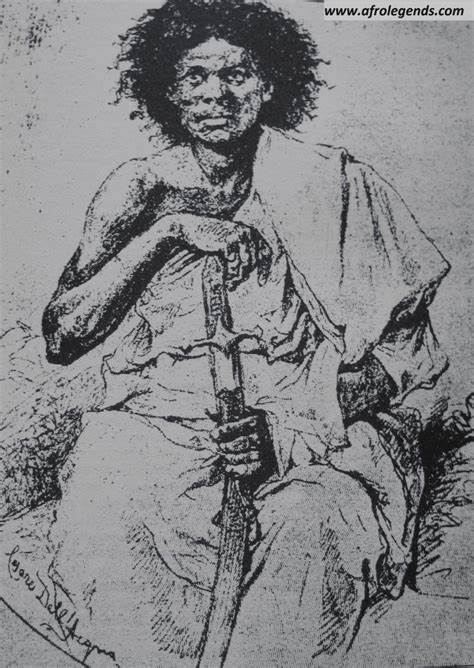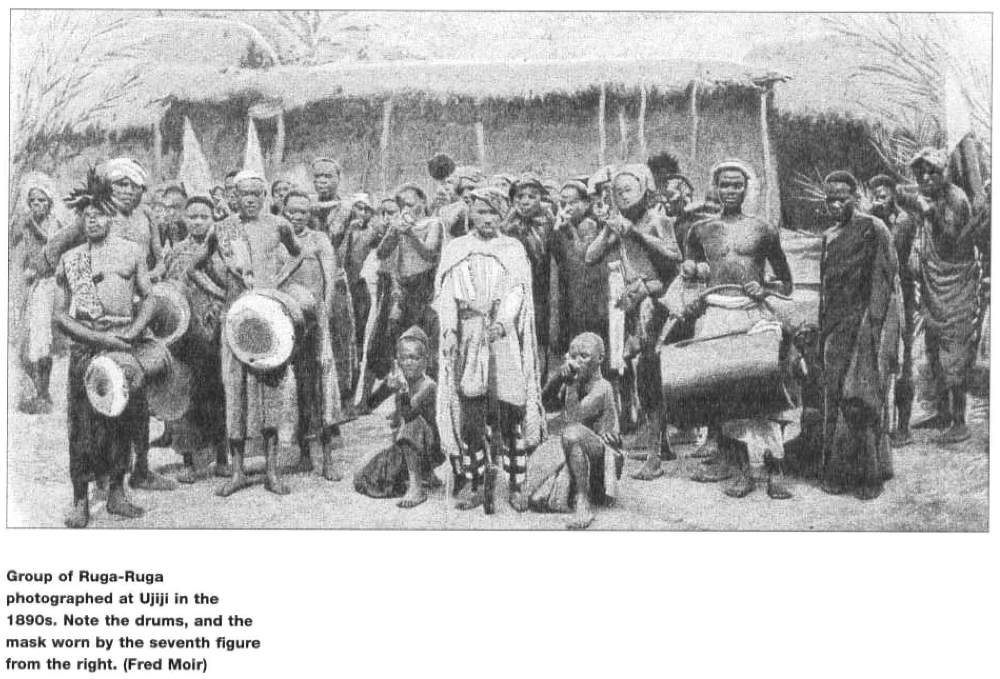I had a few spare Darkest Africa miniatures laying about including Northstar’s Mirambo miniature. I recently spoke to old wargaming friend who mentioned he was going to do some Death in the Dark Continent armies based on east Africa. Most of my collection is based on British Central Africa and single based for use with TMWWBKs, while Death in the Dark Continent uses a multi-basing system. So just to experiment with some multi-basing I knocked up three bases of spare miniatures to represent Mirambo and some of his Ruga-Ruga.
Born in 1840 Mtyela Kasanda, better known as Mirambo ( meaning Heaps of corpses), went on to create one of the largest indigenous African Kingdoms, in the 19th century, in what is today the country of Tanzania. Mirambo’s early life is a bit of a mystery he claimed descent from the legendry Nyamwezi ruler Mshimba but other Nyamwezi Ntemi (kings) didn’t consider his claims legitimate. It appears in his early life he ran a trade caravan this caravan allowed him to both recruit men and gain access to guns. In his early years Mirambo mysteriously developed a close relationship with the WaTatu Ngoni (the most northerly branch of the Ngoni migrations who fled the wars of Shaka Zulu) whose warriors frequently supported his early campaigns. With these resources Mirambo was able to overthrow the Ntemi of the kingdom of Urambo around 1860.

By his death in 1884 Mirambo had expanded his kingdom by conquering many of the other Nyamwezi Kingdoms to the west of his original kingdom. Mirambo didn’t just go to war with the other Nyamwezi he also warred with the Arabs of Zanzibar and their trading colony of Tabora he defeated the Arabs on several occasions though he was never able to conqueror Tabora itself. In his later years he actually allied with the Arabs to fight his long time allies the WaTuta Ngoni who he had fallen out with. After Mirambo’s death his kingdom passed to his brother but lacking Mirambo’s military skills the kingdom disintegrated in a few short years
Henry Morton Stanley, who joined the Arabs in their war against Mirambo in 1871, and later went on to become friends with Mirambo, called him the African Bonaparte. In fact this wasn’t a bad comparison like a young Napoleon Mirambo’s success relied heavily on the speed he could move his army and the strategic surprise this gave him over his enemies. According to the missionary Southon who knew Mirambo he would frequently run 15 miles capture an enemy village and then without stopping run another 30 miles to surprise another village. He would often approach enemy villages by unfrequented routes, at night, and then attack an hour before dawn to gain surprise. Despite these long and difficult marches it is said his army rarely had stragglers because soldiers who fell behind would lose their share of the loot. For most of his life Mirambo lead his armies personally, accompanied by a large white umbrella, and was said to be proud of the fact he would never allow anyone to out run him on the march.
Mirambo’s armies were mostly made up of troops called Ruga-Ruga these professional warriors came from a variety of sources escaped slaves, orphaned young men, tribeless bandits and elephant hunters. Mirambo preferred his soldiers to be young men without wives. As he explained to Stanley the unmarried youths ” have sharper eyes and a few words will give them the hearts of lions. In all my wars with the Arabs, it was an army of youths that gave me victory, boys without beards. Fifteen of my young men died in one day because I said I must have a certain red cloth that was thrown down as a challenge. No, no, give me youths for war in the open field and men for the stockaded village”.
The Ruga-Ruga dressed flamboyantly, red cloth was popular, and increasingly they incorporated Arab dress into their outfits along side beads and jewellery. They often wore bells and were frequently accompanied by drummers the noise from these being used as a form of psychological warfare against enemy villages. Mirambo attempted to supply his men with muskets but it seems there were never enough to go around so traditional weapons like spears, axes, knobkerrie and bows continued in use along side the guns. Shields quickly fell out of use probably because they weren’t compatible with carrying muskets. Tactically the Ruga-Ruga seemed happy to close to contact and fight hand to hand most likely after a volley of musketry. In battle against the Arabs at Wilyankuru in 1871 Mirambo’s Ruga-Ruga ambushed the Arabs from the long grass either side of a track, despite having guns, it seems they relied instead on the spears at close quarters according to Stanley many of the Arabs were stabbed.

As well as his Ruga-Ruga Mirambo had a Bodyguard of freed slaves 100 strong called the Waniakuru who were clothed in Arab style robes in red cloth with white and blue turbans. From this unit Mirambo drew his district governors whose rank was denoted by a shell hung from a strip of lion skin. When Mirambo captured a new village he would have all the loot collected, half he would give back, the other half he would distribute to his soldiers as payment. He would then have the village leaders killed and install his own governor.




